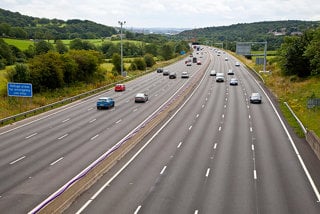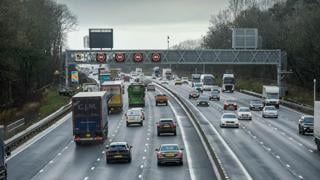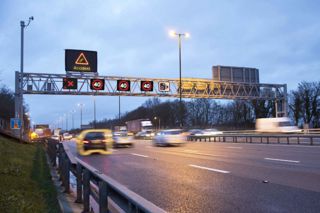The future of Smart Motorways could be short lived as Transport Secretary Grant Shapps has called for a review into their safety.
Shapps told MPs "we know people are dying on smart motorways" and said recommendations are expected "in a matter of weeks" to ensure all motorways are "as safe as they possibly can be".
His announcement follows an admission from Highways England that the dangers of removing the hard shoulder had not been investigated when it began introducing the concept.
Jim O’Sullivan, head of Highways England, said he does not think any more Smart Motorways will be built because “too many motorists don’t understand them. A huge U-turn on his previous positive sentiments in June, when he said Smart Motorways are as safe as conventional ones.
RAC head of roads policy Nicholas Lyes said: “We welcome a commitment from the Secretary of State to review smart motorway safety. We know from our own research that drivers feel the permanent removal of the hard shoulder compromises safety. They also tell us that emergency SOS areas are located too far apart at intervals of up to 1.6 miles.
“While it’s important that we increase capacity on our motorway network, this should only be done using the safest design features and the latest technology which has sadly only been the case on a fraction of smart motorways. Drivers must have confidence that they will be protected from traffic in the event they suffer a breakdown in live lane, particularly where the hard shoulder has been permanently removed.
“We reiterate our calls for the latest stopped vehicle detection technology to be retrofitted on all sections of smart motorway as a matter of urgency and for more SOS areas to be built so drivers are never more than a mile away from one. These measures should also be included in all smart motorway schemes that are currently being built or planned.”
Anthony Smith, chief executive of the independent watchdog Transport Focus, said: “While millions of drivers successfully use smart motorways there is more to do to improve their understanding of how they work and what you should do if you break down.
“Road users tend to trust that ‘the authorities’ would not allow motorways without a hard shoulder if it was unsafe. Highways England must remain vigilant that their trust is not misplaced.”
Earlier this month The AA revealed that only one in 10 motorists felt safer on Smart Motorways than conventional ones and its survey of more than 15,000 drivers found that seven out of 10 (71%) believed that all-lane running schemes felt more dangerous than a motorway with a permanent hard shoulder.
Edmund King, AA president said: “We are delighted that the Transport Secretary has listened to us and agreed to review the safety of ‘smart’ motorways.
“We have been raising concerns for more than six years about the dangers of the 38% who breakdown in a live lane on smart motorways. We hope the review will stop a further rollout unless more Emergency Refuge Areas are planned and retrofitted.
“We trust that the review will not get overtaken by misleading or partial statistical analysis about what type of road is safer but will concentrate on avoidable deaths. We know there are real situations where lives would have saved if drivers on smart motorways had somewhere safe to stop. We owe it to all drivers to give them a safe harbour to stop if their vehicle develops problems.”





















Andy Titterton - 25/10/2019 13:46
'His announcement follows an admission from Highways England that the dangers of removing the hard shoulder had not been investigated when it began introducing the concept.' I can't believe I've just read that statement! Incredible. We've had thousands of travelling hours added to our journeys due to lane closures and speed restrictions, and some idiot admits that the dangers of removing the hard shoulder had not been considered! Those responsible should be roasted on the central reservations!